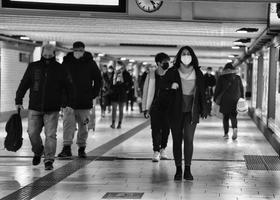For the 2025-26 school year, there are 6 public schools serving 2,355 students in 28779, NC (there are , serving 161 private students). 94% of all K-12 students in 28779, NC are educated in public schools (compared to the NC state average of 92%).
The top ranked public schools in 28779, NC are Jackson Co Early College, Fairview School and Smoky Mountain High School. Overall testing rank is based on a school's combined math and reading proficiency test score ranking.
Public schools in zipcode 28779 have an average math proficiency score of 52% (versus the North Carolina public school average of 51%), and reading proficiency score of 49% (versus the 50% statewide average). Schools in 28779, NC have an average ranking of 6/10, which is in the top 50% of North Carolina public schools.
Minority enrollment is 30% of the student body (majority Hispanic), which is less than the North Carolina public school average of 57% (majority Black and Hispanic).
Best 28779, NC Public Schools (2025-26)
School
(Math and Reading Proficiency)
(Math and Reading Proficiency)
Location
Quick Facts
Rank: #11.
Jackson Co Early College
(Math: ≥50% | Reading: ≥80%)
Rank:
Rank:
8/
Top 30%10
404 College Drive
Sylva, NC 28779
(828) 339-4499
Sylva, NC 28779
(828) 339-4499
Gr: 9-13 | 109 students Student-teacher ratio: 27:1 Minority enrollment: 31%
Rank: #22.
Fairview School
(Math: 63% | Reading: 51%)
Rank:
Rank:
7/
Top 50%10
251 Big Orange Way
Sylva, NC 28779
(828) 586-2819
Sylva, NC 28779
(828) 586-2819
Gr: PK-8 | 781 students Student-teacher ratio: 15:1 Minority enrollment: 28%
Rank: #33.
Smoky Mountain High School
(Math: 40-59% | Reading: 55-59%)
Rank:
Rank:
6/
Top 50%10
100 Smoky Mountain Drive
Sylva, NC 28779
(828) 586-2177
Sylva, NC 28779
(828) 586-2177
Gr: 9-12 | 899 students Student-teacher ratio: 17:1 Minority enrollment: 30%
Rank: #44.
Catamount School
(Math: 40-49% | Reading: 50-59%)
Rank:
Rank:
6/
Top 50%10
100 Smoky Mountain Dr
Sylva, NC 28779
(828) 331-1775
Sylva, NC 28779
(828) 331-1775
Gr: 6-8 | 59 students Student-teacher ratio: 10:1 Minority enrollment: 20%
Rank: #55.
Scotts Creek School
(Math: 35% | Reading: 39%)
Rank:
Rank:
3/
Bottom 50%10
516 Parris Branch
Sylva, NC 28779
(828) 631-2740
Sylva, NC 28779
(828) 631-2740
Gr: PK-8 | 438 students Student-teacher ratio: 12:1 Minority enrollment: 31%
Rank: #66.
Jackson Community School
Alternative School
(Math: <50% | Reading: ≤10%)
Rank:
Rank:
3/
Bottom 50%10
3770 Skyland Drive
Sylva, NC 28779
(828) 586-4328
Sylva, NC 28779
(828) 586-4328
Gr: 5-12 | 69 students Student-teacher ratio: 8:1 Minority enrollment: 38%
28779, North Carolina Public Schools (Closed)
School
Location
Quick Facts
251 Big Orange Way
Sylva, NC 28779
(828) 586-2819
Sylva, NC 28779
(828) 586-2819
Gr: K-8 | 750 students Student-teacher ratio: 14:1 Minority enrollment: 10%
Frequently Asked Questions
What are the top ranked public schools in 28779, NC?
The top ranked public schools in 28779, NC include Jackson Co Early College, Fairview School and Smoky Mountain High School.
How many public schools are located in 28779?
6 public schools are located in 28779.
What percentage of students in 28779 go to public school?
94% of all K-12 students in 28779 are educated in public schools (compared to the NC state average of 92%).
What is the racial composition of students in 28779?
28779 public schools minority enrollment is 30% of the student body (majority Hispanic), which is less than the North Carolina public schools average of 57% (majority Black and Hispanic).
Recent Articles

10 Advantages of Public Education in 2025
Explore 10 key benefits of public education in 2025, with fresh statistics, expert insights, and real-world examples for parents and educators.

COVID-19鈥檚 Lasting Impact on U.S. Public Schools (2025)
Explore how COVID-19 continues to affect U.S. public schools in 2025: learning losses, enrollment shifts, mental health, and recovery strategies.
